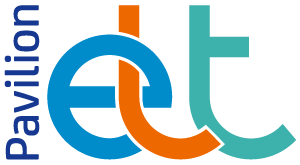Bernardina, Argentina
My name is Bernardina Meza and I work as a teacher of English as a foreign language at state-run high schools in the suburbs of Buenos Aires, Argentina. Due to the pandemic situation, lessons are subject to constant changes, therefore, teachers as well as students have to adapt to different ways of teaching and learning such as online classes (synchronously and asynchronously), hybrid classes and face-to-face classes.
At the beginning of 2020, schools were closed and lessons were supposed to be held through Zoom or Meet apps but unfortunately, most of the students come from families who are facing economic problems and as a consequence, most of them could not access technological devices. In order to reach all students, lessons were delivered through Whatsapp and in some cases, booklets were sent to their houses. The challenge was in preparing a variety of creative and meaningful tasks and activities to get students involved in the EFL lessons. Fortunately, exchanging ideas with colleagues helped me to find diverse resources such as online interactive apps, games, engaging stories and a wide range of useful material.
This material was not only fundamental to explore the use of language but also to provide students with other alternatives and possibilities to learn despite the arduous circumstances.
Katya, USA
Hi All! I am teaching EAP, ITAs and teacher education courses at Utah State. Our EAP classes prepare international, immigrant, and generation 1.5 English language learners for the linguistic and academic demands of college. As many of you, I often find commercial textbooks not always relevant and applicable to my students’ interests, levels, and backgrounds. After learning about open educational resources (OER) at our university, I decided to compile and publish my own resources for teaching ESL listening skills (https://digitalcommons.usu.edu/oer_course/2/). I believe the OER movement is an effective way for teachers to share and to exchange teaching materials, ideas, and innovative approaches to teaching. I am looking forward to reading and learning more about the OER for teaching EAP and ESL classes in the future.
Another challenge that I observed is lack of student motivation, engagement, and overall boredom with having to learn English in an intensive program mainly focused on language and academic skills development. In order to help students feel more motivated and engaged in my classes, I piloted several service-learning and community-engaged projects, which students appreciated and commented upon very positively. One of such projects took students to a local art museum where they conversed about an artwork and completed a scavenger hunt with the use of their mobile devices. The app that I used, Goose Chase, was recommended to me by a museum staff member (https://www.goosechase.com/). The app is very easy to set up and to navigate.
Lastly, as a teacher, I as well encounter students who are academically underprepared for the demands of college and/or have some learning disabilities. While I know and use the resources available for these groups of students on campus, I often find that this support is not sufficient or effective for my students. In the future, I am interested to attend more training workshops about working with these groups of students to learn how I can help them better in my EAP classes.
Natalia, Kuwait
I have been working as an English instructor at the University of the Middle East for almost four years. I teach English at the English Preparatory Programme to students who want to improve their language skills and successfully progress to their major. The past two years have been complex and challenging for both students and teachers: the classrooms became virtual and technology-driven, a situation that none of us was prepared for. Teaching was complicated by the fact that we could not see the faces of our students on the screen; therefore, at times it felt like I was teaching ghosts. Students experienced similar emotions aggravated by the fact that, driven out of their usual study environment on campus, they ended up in a situation where they had to share their study rooms at home with their brothers and sisters.
One of the challenges of distance learning was adapting our in-person course and materials to those suitable for a remote setting. We tackled the issue by creating online content. To do so, we explored the Moodle functions that we had never used before. The classes were held through BigBlueButton, an educational platform similar to Zoom but with more features such as multi-user whiteboard, audio/video sharing, and shared notes that helped boost our students’ engagement during the class. Another difficult task was to change the system of student assessment. To address this matter, we got in touch with our publishers (National Geographic and Pearson) to inquire about the solutions that could assist us. They suggested MyELT (for reading, writing, and listening) and MyEnglishLab (for grammar). In essence, these are eLearning platforms that can be used not only to reinforce lessons from the Student book, but also to create assignments and track student progress. It made me feel exhilarated as my dream came true: we had finally gone ‘paperless’. Although the spring semester of 2022 has marked the return of students back on campus, to the old ‘normal’, we are still keeping the good practices the Covid-19 situation has taught us and that continue to be useful in enhancing students’ motivation and autonomy.
I never thought that I would say this, but the years of the pandemic have been somewhat enlightening in terms of creating numerous opportunities for self-discovery and professional growth.
Erika, Mexico
What is it like to be an ESL teacher here? Unlike other countries, Mexico has a strong interest in foreign people, goods, and influence. One example of this eagerness to be multicultural is to speak another language. Despite this desire, it is uncommon to have fluent speakers of English, let alone people who have the chance to travel abroad regularly to practise or learn it.
The mastery of a foreign language is seen as a luxury not many can afford, at least in the public education sphere. Children do not have the chance to study English at school until they are not children anymore, that is, secondary school.
Teachers face the challenge of having students who have had many opportunities to practise the language along with the other ones, who have not had any instruction on foreign languages. What shall you do when the social gap is such? How can you motivate the weaker students without demotivating the more advanced ones? Will this gap make them flee from learning because they find it appalling and embarrassing? Or will it make them strong-willed for that matter?
Mexico’s reality is taking measures to improve something that is lacking: ‘Let’s send state-of-the-art computers to that school so they can use this new programme online,’ sounds like a good idea, but then they discover that they are useless because simply there is nowhere to plug them in.
Another reality is that of investing money in international certifications for teachers, to prove that the resources are being used, but what is the purpose if the teachers taking the certification do not have the faintest idea what the exam is about or worse, do not know English?
Being a teacher here requires you to be single-minded, ethical, to be able to motivate yourself (because wages surely will not), to use your own resources and your imagination to compensate for tools that you or your students do not have access to.
It is not as bad as it looks, though. Students like to be challenged, and Mexican students more. Ask them to do something you think impossible, and they will.
What has worked for us is having a project, either personal or social. This semester was about introducing a living legend to the class, writing a mini-victory book telling the class about your weekly victories and pleasantly surprising someone, which consists of observing people around us and doing something for them.
This way they realise they have more in common than they think, and it boosts interest and motivation in the class as they want to know about their peer’s projects and of course, want to share an interesting project too.
Teerawat, Thailand
The COVID-19 pandemic has been causing students in all educational levels to be outside of our normal systems. Teachers as educators should, therefore, be on the lookout for effective solutions to help their students overcome these problems. In response to the pandemic, social distancing became an important part of the teaching and learning process. I’d like to share with you some of the teaching methods I have used during this period.
I teach the Research Seminar subject for the third-year English major students who areage between 20 and 22 years of age at Rajamangala University of Technology Isan, Nakhon Ratchasima, Thailand.
Because of the online teaching and learning situation, my lectures focused on flipped classrooms with 46 students having to study by themselves and then, joining the online classes to discuss the assigned tasks. The objectives of my teaching methods were to provide them with three crucial aspects of critical thinking activities which promoted quick thinking, creative thinking, and analytical thinking skills. There are four key teaching considerations: content, instructional methods, practices, and feedback. In terms of content, teachers should introduce critical thinking concepts in provided reading materials and assigned tasks to enhance students’ understanding of critical thinking. Most significantly, teachers hold an important role in designing online teaching activities. Teachers should play the role of an online facilitator to clarify course topics, to keep the discussions on track, to introduce opposing views to students, to help students with the online platform, and to emphasise good online behavior. Online interactions between students and a teacher and students with other students are also important. All students should be involved in both individual and group activities. While they worked with their friends or the teacher, and when I asked questions in an online classroom, students were given the chance to answer for themselves and thought critically about what they learned and what they believed to be truthful. When students worked in groups and were forced to engage in discussion sections, this was also a great chance to spread out their thinking and use their critical thinking skills. Furthermore, the other teaching objective was to promote students’ speaking proficiency which integrated with the critical thinking activities mentioned above. The results from the activities showed the improvement of the students’ speaking proficiency because they understood clearly the assigned tasks which they worked on both individually and cooperatively.
From my point of view, it is very difficult for teachers as educators to drive our students’ motivation with all-day-long learning online. Hence, teaching methods and techniques with well-prepared lessons are the most important tools for teachers to successfully teach our students to reach the goals of learning and teaching.



